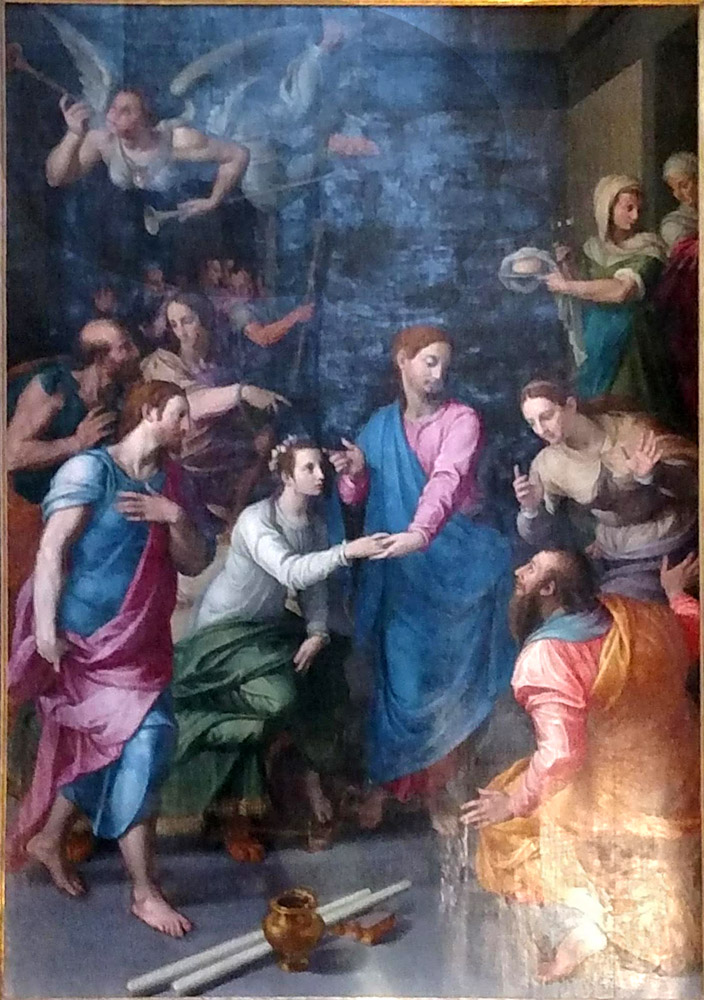
Il Bronzino
The Resurrection of the Daughter of Jairus
1570-72
Church of Santa Maria Novella, Florence, Italy
The main part of the painting presents a quite literal illustration of the miracle in Matthew 9:18-26, Mark 5:23-43, and Luke 8:41-56. Jesus holds the girl's hand and tells her to arise. Jairus and his wife respond joyously. Peter, James, and John stand behind the girl and to her right, and behind them are those who had come to mourn.
Before Jesus' arrival everyone assumed the girl was truly dead, so the artist has placed funerary items in the foreground: candles, a book, and an incense jar from which black smoke emerges.
The angel with the trumpet in the upper left corner reflects an eschatological interpretation of this miracle. In the gospel accounts the story of Jesus resurrecting the girl is interrupted by another episode in which he cures a woman with a flow of blood. On the basis of some details in the latter story and Jairus's role as leader of a synagogue, the commentators believed that the woman and the girl represent Church and Synagogue respectively. The one was cured before the other because the Jews will not come to Christ until the last days.1 The angel with the trumpet, then, is the seventh angel of Revelation 10:7, whose final trumpet signals that "the mystery of God shall be finished, as he hath declared by his servants the prophets."
Finally, the women bringing a loaf of bread in from the right are responding to Jesus' call that the girl be given food (Luke 8:55). Picturing the food as a loaf may reflect the Glossa Ordinaria's interpretation that the food is a symbol of the Eucharist.2
View this image in full resolution.
Read more about this miracle.
Photographed at the site by Richard Stracke, shared under Attribution-NonCommercial-ShareAlike license.